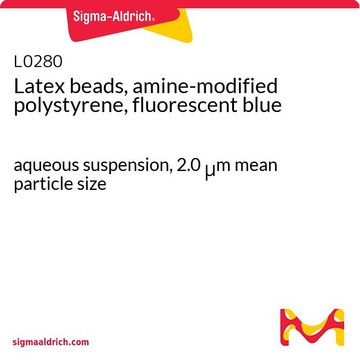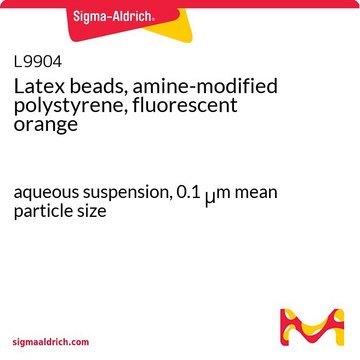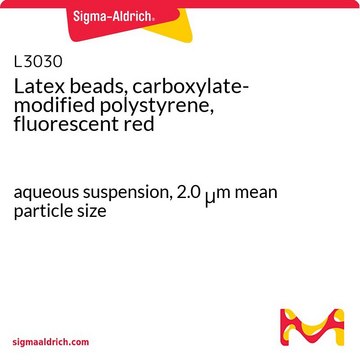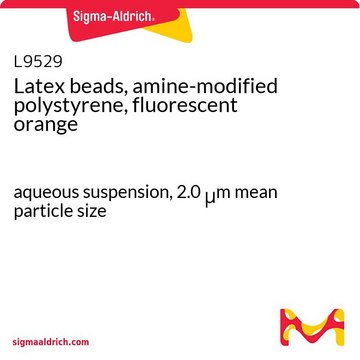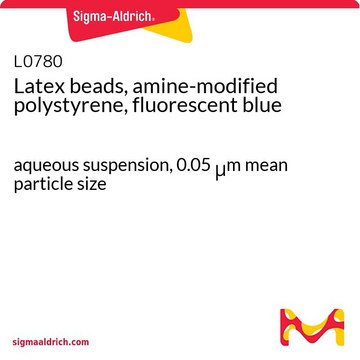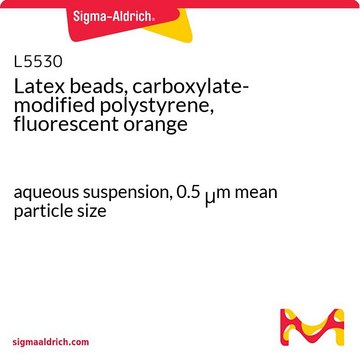L1030
Latex beads, amine-modified polystyrene, fluorescent yellow-green
aqueous suspension, 1.0 μm mean particle size
About This Item
Produits recommandés
Forme
aqueous suspension
Niveau de qualité
Composition
Solids, 2.5%
Technique(s)
cell based assay: suitable
Taille moyenne des particules
1.0 μm
Fluorescence
λex ~470 nm; λem ~505 nm
Application(s)
cell analysis
Vous recherchez des produits similaires ? Visite Guide de comparaison des produits
Application
- in the characterization of nano- and microplastics
- in tendon preparation to label tendon fascicles to enable precise localization of the tissue surface
- in phagocytosis assay to label spleen cells
Actions biochimiques/physiologiques
Code de la classe de stockage
10 - Combustible liquids
Classe de danger pour l'eau (WGK)
WGK 2
Point d'éclair (°F)
Not applicable
Point d'éclair (°C)
Not applicable
Certificats d'analyse (COA)
Recherchez un Certificats d'analyse (COA) en saisissant le numéro de lot du produit. Les numéros de lot figurent sur l'étiquette du produit après les mots "Lot" ou "Batch".
Déjà en possession de ce produit ?
Retrouvez la documentation relative aux produits que vous avez récemment achetés dans la Bibliothèque de documents.
Les clients ont également consulté
Notre équipe de scientifiques dispose d'une expérience dans tous les secteurs de la recherche, notamment en sciences de la vie, science des matériaux, synthèse chimique, chromatographie, analyse et dans de nombreux autres domaines..
Contacter notre Service technique

